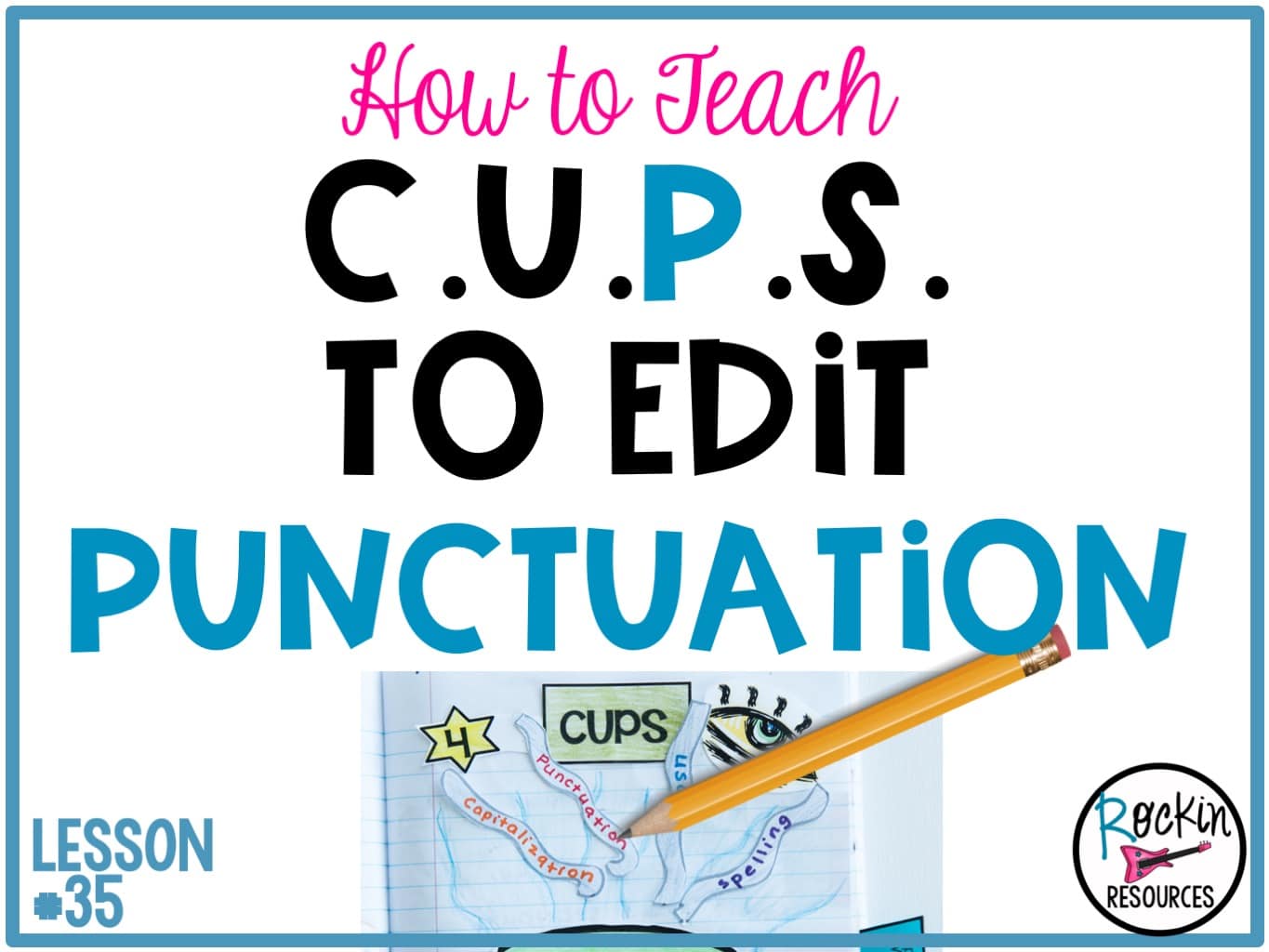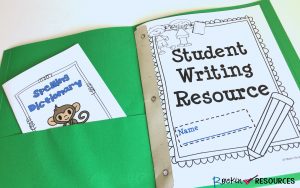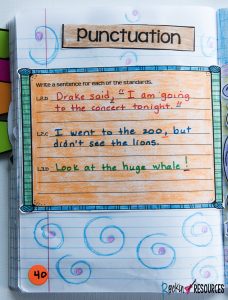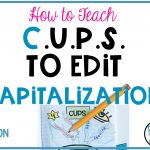Are you looking for ideas to teach PUNCTUATION to your students? This post will review basic punctuation rules needed for an upper elementary curriculum, provide ideas for teaching them, and symbols when proofreading. The writing mini lesson is part of a series of lessons designed for instructional scaffolding in writer’s workshop. It is part of the CUPS (Capitalization, Usage, Punctuation, Spelling) for editing acronym where P stands for Punctuation.
Below you will find ideas for teaching PUNCTUATION to help yours students become better editors.
1. TEACH
Provide anchor charts with the following information. If you own the interactive writing notebooks, anchor charts are included! Use them when teaching each rule and post them on a bulletin board or in a writing center.
PERIOD
A. End of statement Ex. The monkey was swinging from the trees.
B. Abbreviations Ex. Mr. Mrs. Dr. Rd. Ave. St. in. ft. yd.
C. Initials Ex. U.S.A.
QUESTION MARK
Asks a question. Ex. Where is the cute puppy?
EXCLAMATION POINT
Shows a strong feeling. Ex. Look at the huge whale!
COMMAS
A. In a series Ex. I want a piece of cake, pie, and candy!
B. Combining Sentences Ex. I went to the zoo, but didn’t see the lions.
C. Introduction Ex. Yes, she is here. Well, I never thought about it.
D. Between city and state Ex. Pittsburgh, PA
E. Between date and year Ex. July 4, 1776
F. After a greeting and closing in a letter Ex. Dear Mom, Sincerely,
QUOTATION MARKS
Around what the person actually says.
- Periods and commas always go inside the closing quotation marks. Ex. Drake said, “I am going to the concert.” Come back next week,” the doctor told Gus.
- Question marks and exclamation points go inside the closing quotation marks when only the quoted material is either a question or an exclamation. Ex. He asked, “Where are they now?”
- Question marks and exclamation points go outside the closing quotation marks when the entire sentence from a question or an exclamation. Ex. I told you to stop calling me your “little sweetie pie”!
2. MENTOR TEXT
Use a mentor text to show students how authors use punctuation.
Lon Po Po by Ed Young
Verdi by Janell Cannon
3. MODEL
Model proper punctuation. Within your rough draft of a class story, make punctuation mistakes. It you didn’t along the way, no problem. Take the class story and create mistakes. Then show students how to correct them. Make sure to talk through the corrections. The following video will show you symbols to use when correcting. You will notice that I don’t use many symbols. I know there are many add on symbols, but I like to simply add the punctuation in a different color. The exception is a period because sometimes it can get lost.
4. TAKE NOTES
Students should take notes on the PUNCTUATION rules or provide a mini anchor chart of the rules for students to paste in their notebooks. Also include the rules in a student writing resource to use in writing centers or homework.
5. PRACTICE
Students should practice writing sentences with different punctuation and proofreading sentences with incorrect punctuation. This practice will help students remember the rules in their own writing.
6. APPLY
Students should now apply their knowledge and proofread their own story for correct punctuation. If motivation is needed, provide magnifying glasses and be detectives!
7. SHARE
In small groups or partners, have students share places where they found punctuation errors. It may help the reluctant editors dig deeper in their own writing.
I hope this will help your students become stronger editors!
If you are looking for a C.U.P.S. unit, click the image below!
Check out my FREE writing masterclass! CLICK HERE
LAST LESSON: WRITING MINI LESSON #34 CUPS FOR EDITING- USAGE
NEXT LESSON: WRITING MINI LESSON #36 CUPS FOR EDITING- SPELLING
CLICK HERE FOR THE FULL LIST OF WRITING MINI LESSONS
This lesson is also included in the STEP-BY-STEP WRITING® Program with mini-lessons designed to scaffold through the writing process. Writing units included are sentence structure, paragraph writing, narrative writing, opinion writing, and informative writing. See what is included in the image below and click on it to learn more about them! You will turn your reluctant writers into ROCKSTAR WRITERS™!
“I love this as it really walks you through the writing process for you AND the students. It has given me confidence to really enjoy writing as well as my students. They love writing time now.” -Melinda R.









